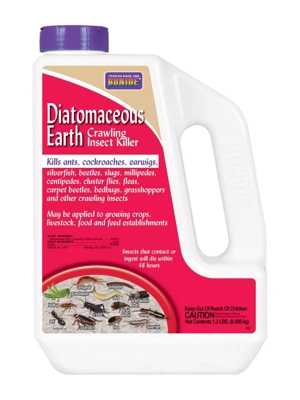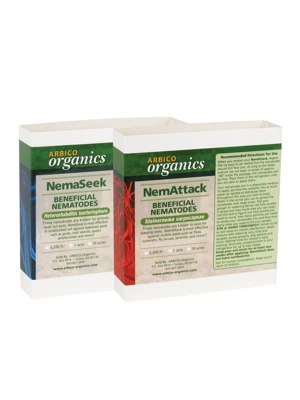Controlling Bedbugs
 Adult bedbugs are about 1/4″ long.
Adult bedbugs are about 1/4″ long.Like mothers across the country, my mom ended many a nighttime tucking-in with the words, "Good-night, sleep tight, and don't let the bedbugs bite." I didn't think much about the actual words and never asked her what she meant. After all, she never told me how to keep the bedbugs from biting (nor, come to think of it, how to "sleep tight"). My mom was an Army nurse stationed in India during WWII and told stories of shaking the scorpions out her shoes before putting them on. That image is burned much deeper into my psyche than anything having to do with bedbugs.
Bedbugs are Back
These nocturnal noshers were pretty much eradicated in the developed world by the 1940s. No one can say for sure why, but there's been a rising incidence of bedbugs since the mid-1990s. Some people attribute it to an increase in international travel; others think that for decades, bedbugs were kept in check with chemicals, including DDT, that were used to fight cockroaches.
What is clear is that the presence of bedbugs is not a sign of poor housekeeping, and that the bugs don't discriminate by class. They've found their way into some of the swankiest resorts and fanciest hotels, likely by hitching rides in clothing and luggage.
Bedbugs 101
Adult bedbugs are about 1/4″ long, with flattened oval bodies. Lacking wings, they can't fly but they can scurry quickly. Color ranges from pale brown to reddish brown, with the red color indicating they've just had a "snack". Like mosquitoes, bedbugs pierce the skin and inject their saliva, which contains anticoagulants to prevent blood from clotting and clogging up their feeding tubes. The insects feed for five to ten minutes, and then drop off. Some people then get itchy rashes or raised welts from the bites. The good news is that there's no evidence that bedbugs transmit disease.
Identification
How can you tell if you have bedbugs in your home? And what about that hotel bed? Unless you are able to catch the bugs red-handed, it can be challenging to determine if you've got a problem. The bugs are small and mobile, and the eggs are too tiny to see. You can inspect the mattress — especially along the edges and seams where they like to hide in the cracks. Look for the insects themselves or for dark pellets of fecal matter. You can call in a professional to check for bedbugs, and there are even bedbug-sniffing dogs.
Control
The most widely used pesticides to control bedbugs contain synthetic pyrethroids that kill on contact. Researchers are finding that some bedbug populations are now showing signs of resistance to these chemicals. The good news is that organic sprays containing clove, peppermint and orange oils are also effective on contact, and it appears that the insects don't develop resistance to them. One option to explore is the use of dessicants, which work by destroying the waxy coating on bed bugs. Because they work via a physical method, bed bugs can't become resistant to them like they can a pesticide. You want to limit the use of products like diatomaceous earth to cracks and crevices, though, to reduce the risk of inhaling the product.
Call Out the Feds
For more information, read all about preventing and controlling bedbugs at the EPA's Bed Bugs Resource Center.Last updated: 03/13/2024
Print this Article:
Related items
Get the Dirt
Stay up to date on new articles and advice. Please fill out the information below.



